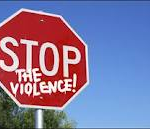Violence/Intentional Injury
An injury which is judged to have been purposely inflicted, either by the self or another — assaults, homicides, self-inflicted injuries and suicides
Rice et al., 1989
Violence/Intentional Injuries
- A total of 199,752 deaths were recorded in 2014 from poisoning, motor vehicle and firearms.
- In 2014, suicide was the second leading cause of death among individuals, ages of 10-24.
- Homicide was the fourth leading cause of death (National Center for Health Statistics, 2016).
Suicide
- Suicide rates continue to increase across all age groups and races.
- The CDC reports approximately 41,149 suicides in 2013 in the U.S. — equal to one every 13 minutes.
- The need for increased access to mental health services persists.
Sexual Violence
- Sexual violence remains a public health problem that affects million of people annually
- Roughly 20 percent of women and 7 percent of men experience some form of sexual violence in their lifetime.
- CDC released STOP SV, a technical report that compiles various strategies and best practices for states and communities to implement.
- By creating protective and inclusive environments, the number of incidents can decrease.
Intimate Partner Violence
- Nearly 30 percent of women and 10 percent of men experience some form of intimate partner violence in their lifetime — physical violence, sexual violence, stalking and psychological aggression.
- Sexual violence occurs roughly one every 24 minutes — impacting more than 12 million people every year.
- Awareness and education about common risk factors can help to address rising concerns. Activities and evidence-based approaches are available from CDC and Futures Without Violence.
Child Maltreatment
- In 2015, roughly 683,000 cases of neglect and abuse were reported to child protective services.
- Statistics show more than 25 percent of children are victims of neglect in their first year of life.
- Additional research looked at these adverse childhood experiences and to develop preventive strategies to enhance awareness and education.
- The CDC has gathered a number of best practices that can be used for reporting and addressing child maltreatment.
Youth Violence
 Youth violence — bullying, robbery and assault — lead to emotional and physical harm.
Youth violence — bullying, robbery and assault — lead to emotional and physical harm.- It is the third leading cause of death among adolescents and young adults.
- Factors linked to youth violence — drug and alcohol use, poor grades in school, poverty in the community and a lack of safety in the social and physical environments (CDC, 2015).
- Addressing these risk factors and developing community-based interventions to educate at-risk individuals may allow for coordinated and maintained preventive efforts.